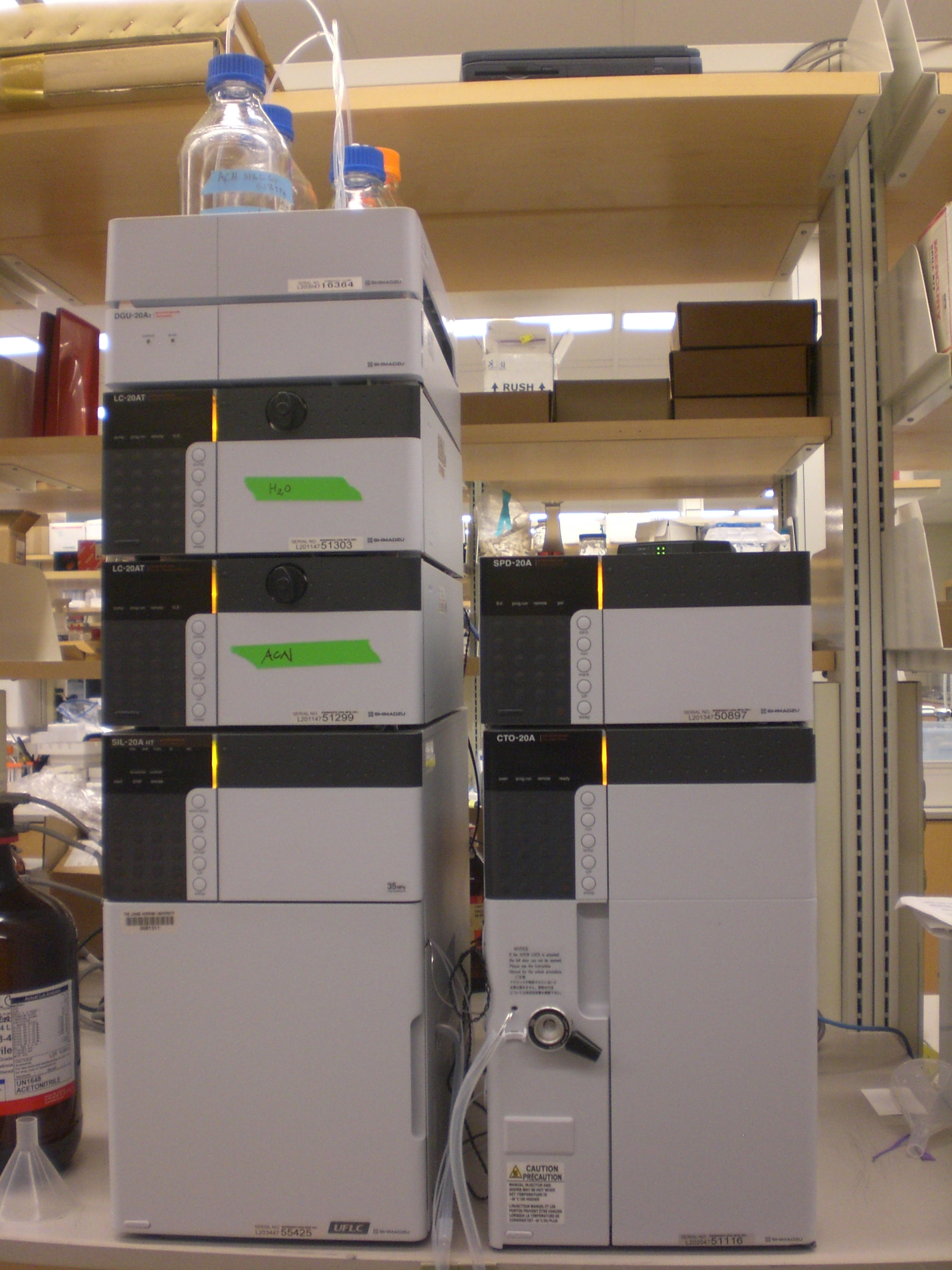Measurements and Quantification
In order to assess the efficiency and effectiveness of our yeast strains, we performed a series of quantitative measurements which would allow us to determine protein expression levels, amount of products and bi-products synthesized, and kinetic rates of the enzymes in our system. The results of these experiments also provide important initial conditions for the modeling aspect of our project, as it provides us with reliable and realistic in vivo gene expression and catalytic activity of the enzymes specific to our system. The following experiments will allow us to quantitatively determine these desired expression/synthesis in our system.
Extraction of β-carotene from Yeast
β-carotene was extracted from yeast for quantification. After the addition of pyrogallol in methanol, cells were saponified with potassium hydroxide. The samples were incubated at 75 degrees, and β-carotene was then extracted with hexane. Samples were dried in a vacuum desiccator for future analysis.
Spectroscopy and High Pressure Liquid Chromatography (HPLC) for Measuring Product Synthesis
HPLC was performed in order to characterize the products synthesized and measure the amount of β-carotene and produced by our yeast strains. This strategy was chosen for its high degree of accuracy and potential to seperate products extracted from cell lysate. Based on a standard curve, in vivo measurements of β-carotene produced per yeast cell was determined. HPLC analysis was performed on a C18 Varian 5 micron 5x250mm column to verify the presence of β-carotene. The UV detector was set at 450nm, and the retention time of beta carotene is around 16.6 minutes.
Spectroscopy was utilized in conjunction with HPLC as an alternative, and offered a very practical method for product measurement, as carotenoids are colored pigments. Absorbance of β-carotene was measured with a UV spectrophotometer at 449nm.
Protein Purification for Enzyme Assay
In order to perform enzyme kinetics measurements for the enzymes in the β-carotene pathway, the enzymes had to be purified first. The enzymes being purified were geranylgeranyl pyrophosphate synthase, phytoene desaturase, and phytoene synthase and lycopene cyclase produced from the genes crtE, crtI, and crtYB, respectively. By isolating our enzymes of interest, we would greatly increase the accuracy of the kinetics experiments by eliminating overlapping background interference of absorption spectra, removing any competitive inhibitors of our enzymes, and ensuring a controlled measurement of our enzymatic rates were being measured. A procedure was designed which would allow for high amounts of product purified from extract, as well as high purity of our purification product. Using a TEV-his6X-mCherry-KAN tag, we would be able to purify our enzyme with only one high efficiency purification step (Nickel Column Purification using His-tag) and characterize product with great accuracy through the use of an mCherry (RFP) component of the tag. The following procedure is an outline of sequential experiments necessary to isolate and confirm the isolation of our enzymes.
To purify the expressed protein of interest, the steps are as follows:
- Growth of yeast strains.
- PCR gene of interest-TEV-his6X-linker-mCherry-KAN. Tag is on C-terminus of the protein.
- Transform PCR products into yeast strains.
- Microscopy to show red fluorescence.
- Genomic prep from transformed cells and testing by PCR for integration of the tag at the c-terminus of the genes.
- Make a cell lysate and run through a nickel column for purification.
- Perform a Western Blot with DSred antibody or run a coommassie gel to assess purification (both size and quantity).
Enzyme Assay
The set of enzyme kinetics experiments that we plan to perform for both β-carotene and L-ascorbic Acid will allow us to calculate the catalytic rates and efficiency of the enzymes in our pathways, and will allow us to optimize the system as we see fit based on environmental conditions, substrate levels, and stress created by over-stressing our pathway. Assuming Michaelis Menten kinetics for our enzymes, we will be able to calculate kinetic values such as Km, kcat, and Vmax of the enzymes. In preparation for the measurements, cellular conditions will be modeled as close as possible for this in vitro experiment. An in vivo enzyme kinetics experiment was hypothesized, but due to the complexity of our pathway, it was decided that the interference would be too great to determine our enzymes signal. Details of the protocols are still being evaluated. The use of a fluorescent co-factor, NADPH, which is necessary for reactions catalyzed by phytoene desaturase, will prove useful as a fluorescent indicator of a kinetic rate. However many of the substrates and products of the beta-carotene reactions have similar absorption spectra, or do not require a fluorescent co-factor, therefore spectroscopy alone would prove to be inaccurate. As an alternative, one option would be to quench the reaction at regular time intervals and isolate the product with HPLC, thus measuring product concentration over time, which is directly related to the reaction rate.
 "
"



